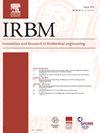磷酸基玻璃/TiO2颅骨修复材料的表征及体内评价
IF 5.6
4区 医学
Q1 ENGINEERING, BIOMEDICAL
引用次数: 0
摘要
目的肿瘤、先天性畸形、颅骨减压手术和颅骨骨折导致的颅骨缺损是本研究的主要问题。需要找到一种能够刺激和促进颅骨骨组织愈合的生物材料,从而实现损伤的快速和完全恢复,有助于提高患者的生活质量。生物活性玻璃是具有优异生物特性的材料,包括生物活性、生物相容性、可吸收性以及促进细胞粘附和骨整合的能力。本研究旨在评价磷酸基生物活性玻璃(45P2O530CaO24Na2O1TiO2, mol%)在Wistar大鼠颅骨修复中的化学成分。材料与方法实验方法包括在Wistar大鼠颅骨内形成环肺组织,并在实验组的环肺组织内植入假体,在对照组和实验组两组中制造颅骨缺损。研究对象在四个月的时间里接受了运动和认知行为测试,以分析假肢对大脑的潜在副作用。使用颅脑组织的物理、化学和生物学表征技术,包括x射线衍射、扫描电镜、能量色散光谱元素分析、颅骨组织组织学评价、Alacian蓝染色法和脑组织组织学评价。结果作者发现羟基磷灰石从术后第一个月开始在种植体表面沉淀,与对照组相反,在术后第三个月开始出现沉淀。植入物促进骨组织再生而不影响运动能力或联想学习。结论生物活性玻璃颅骨假体具有良好的物理、化学和生物学性能,具有良好的骨诱导、骨传导和骨细胞粘附性,且在脑内无不良反应。本文章由计算机程序翻译,如有差异,请以英文原文为准。

Characterization and In Vivo Evaluation of Phosphate-Based Glass/TiO2 for Skull Prosthetic Application
Objectives
Skull defects as a consequence of tumors, congenital anomalies, decompressive craniectomies, and skull fractures are a problem that led to the development of the present study. The need to find a biomaterial that can stimulate and promote the healing of skull bone tissue, thereby achieving rapid and complete recovery from the injury, helps improve the patient's quality of life. Bioactive glasses are materials with excellent biological characteristics, including bioactivity, biocompatibility, resorbability, and the ability to promote cell adhesion and osseointegration. The present investigation aimed to evaluate the chemical composition of phosphate-based bioactive glass (45P2O5![]() 30CaO
30CaO![]() 24Na2O
24Na2O![]() 1TiO2, mol%) in Wistar rats for skull prostheses applications.
1TiO2, mol%) in Wistar rats for skull prostheses applications.
Materials and Methods
The experimental methodology involves creating a cranial defect in two groups (control and experimental) by forming trephines in the skulls of Wistar rats and implanting the prosthesis in the trephines in the experimental group. Subjects underwent motor and cognitive-behavioral tests over a four-month period to analyze the prosthetic's potential side effects on the brain. The physical, chemical, and biological characterization techniques of both cranial and brain tissue were used, including X-ray diffraction, Scanning Electron Microscopy, Elemental analysis by energy dispersive spectroscopy, Histological evaluation of skull tissue, Alacian Blue Staining Method, and Histological evaluation of brain tissue.
Results
the authors found hydroxyapatite precipitations on the implant surface from the first-month post-surgery, contrary to the control group, where precipitations began to appear in the third month after surgery. The implant facilitated bone tissue regeneration without compromising motor capabilities or associative learning.
Conclusions
The present investigation supports the application of a skull prosthesis made of bioactive glass, which exhibits excellent physical, chemical, and biological properties, demonstrating adequate osteoinduction, osteoconduction, and bone cell adhesion, without presenting adverse reactions in the brain.
求助全文
通过发布文献求助,成功后即可免费获取论文全文。
去求助
来源期刊

Irbm
ENGINEERING, BIOMEDICAL-
CiteScore
10.30
自引率
4.20%
发文量
81
审稿时长
57 days
期刊介绍:
IRBM is the journal of the AGBM (Alliance for engineering in Biology an Medicine / Alliance pour le génie biologique et médical) and the SFGBM (BioMedical Engineering French Society / Société française de génie biologique médical) and the AFIB (French Association of Biomedical Engineers / Association française des ingénieurs biomédicaux).
As a vehicle of information and knowledge in the field of biomedical technologies, IRBM is devoted to fundamental as well as clinical research. Biomedical engineering and use of new technologies are the cornerstones of IRBM, providing authors and users with the latest information. Its six issues per year propose reviews (state-of-the-art and current knowledge), original articles directed at fundamental research and articles focusing on biomedical engineering. All articles are submitted to peer reviewers acting as guarantors for IRBM''s scientific and medical content. The field covered by IRBM includes all the discipline of Biomedical engineering. Thereby, the type of papers published include those that cover the technological and methodological development in:
-Physiological and Biological Signal processing (EEG, MEG, ECG…)-
Medical Image processing-
Biomechanics-
Biomaterials-
Medical Physics-
Biophysics-
Physiological and Biological Sensors-
Information technologies in healthcare-
Disability research-
Computational physiology-
…
 求助内容:
求助内容: 应助结果提醒方式:
应助结果提醒方式:


